Estimated reading time: 4 minutes
Have you checked your peach trees yet to see if you have a crop this season? Or your nectarine and apricot trees?
When flowering has finished on your stone fruit trees and the leaves have started to grow, it’s a good time to assess the crop.
Related Articles
Fourteen varieties of apricot trees: pros and cons
Apricot trees are loved by many people. But what are the pros and cons, and how do you choose one variety over another?
How to grow apples — the organic way
Apples are one of the most popular fruits to grow in your backyard. Learn the basics of how to look after your apple tree.
Reclaiming bush food
Learn from indigenous farming heritage and give Australian native foods a place in your garden, kitchen, and diet.
Particularly watch out for the impact of a couple of common diseases. One of the most common is leaf curl. They can play havoc with your fruit trees, often without your realising it.
The Anzac peaches are one of the first to flower at our place, and nearly always set a good crop. If you have this (or any other early-season varieties) it may even be time to start thinking about fruit thinning.
As well as peaches, you’ll also be thinning apricots soon (if you haven’t already started). While you’re doing so, it’s a good time to look out for signs of blossom blight in your tree.
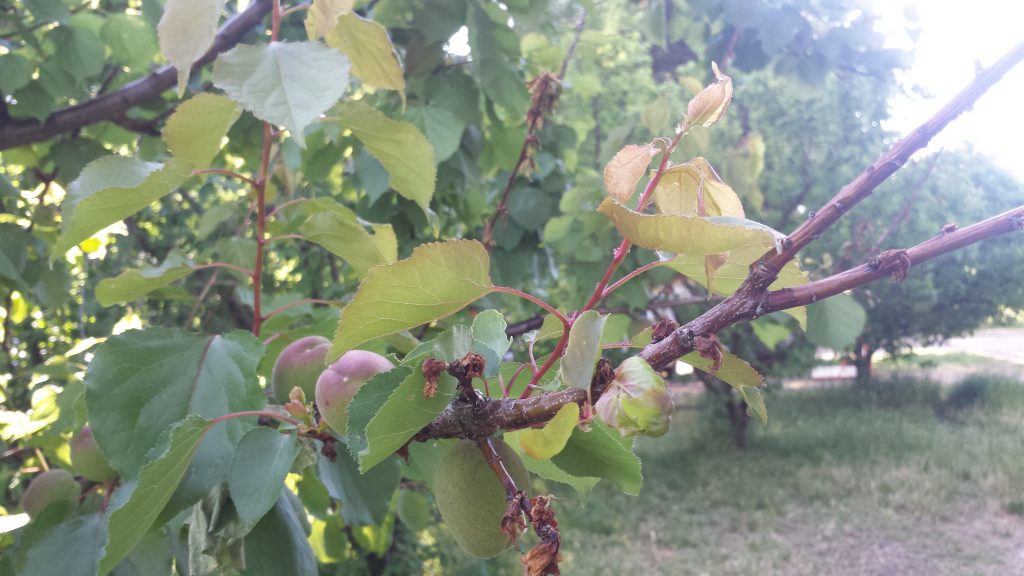
Even though this disease does the most damage when the tree is flowering, it can also affect the fruit that has set. This is because the disease that causes blossom blight also causes brown rot.
It’s not unusual to see remnants of it alongside healthy apricots if you’ve had a mild case.

What should you do next to look after your peaches?
If you notice any of these diseased flowers on your apricot or peach tree (and you also have healthy fruit) then knock off or prune away any diseased flowers or shoots. This is for two reasons:
The first is that they can contribute to disease outbreaks next year. However, the more urgent reason is that the pathogen that causes blossom blight also causes brown rot this season. Young, developing fruit is very vulnerable, as you can see in the following photo:
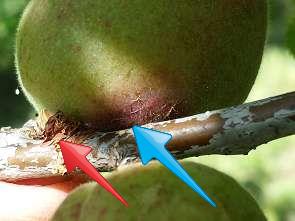
The other disease to check for is leaf curl, which is usually fairly obvious, the red leaves are a dead giveaway.
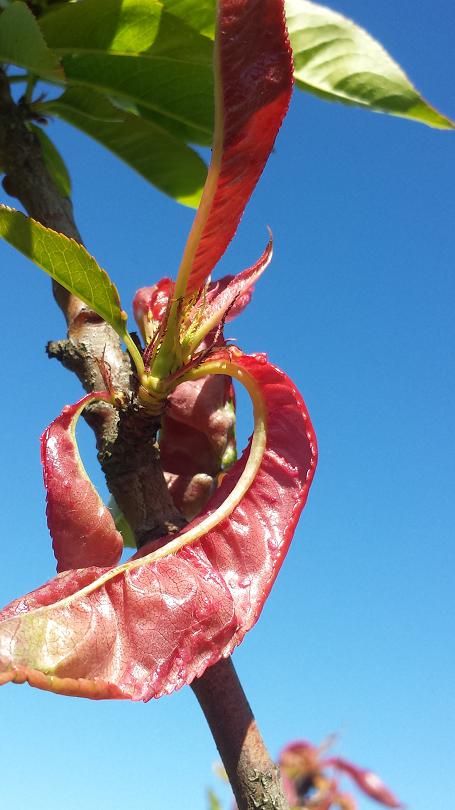
Luckily, only peaches and nectarines are affected by this disease. However if your tree has a really bad case, it can also affect the fruit. This is another thing to look out for while you’re thinning, because you may as well pull the infected fruit off.
The affected fruit looks like this:
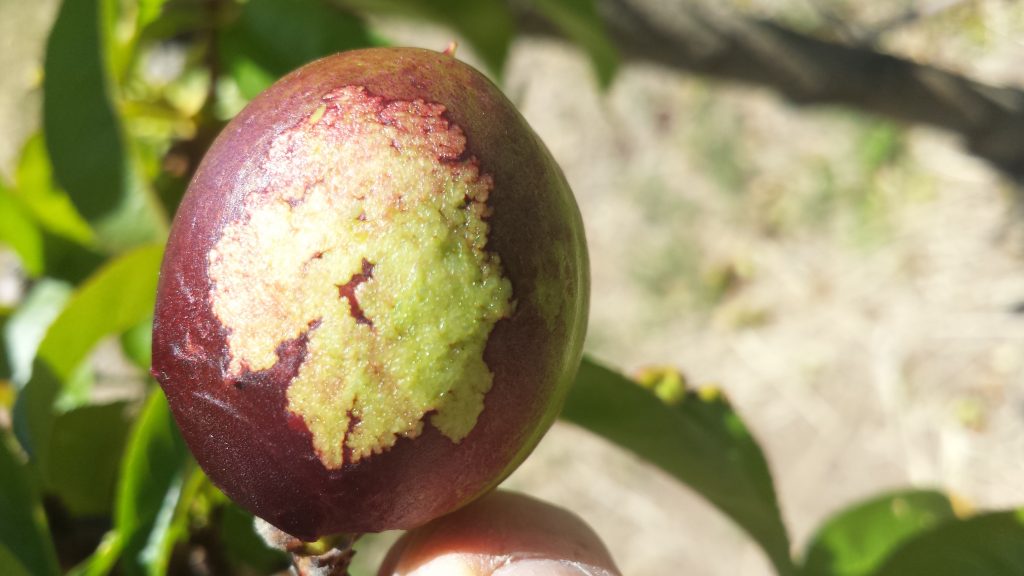
Why trees can be affected even if you sprayed
It’s not uncommon to end up with one of these infections despite having sprayed, which is super annoying.
There are a few potential reasons for this. The first is that you may not have the right spray equipment for the size of the job you need to do. It’s important to choose the right option to match your garden. If you’ve gone to the trouble and effort of spraying, it makes sense to be sure it’s going to work!
The second reason is that you may not have got the timing quite right, and the right conditions were in place for the fungal disease to take hold in the tree unimpeded.
The third most common reason is that you didn’t spray often enough – or that the spring was just too wet, depending on how you look at it!
Of course, the long-term aim is to get your orchard and trees healthy enough so they don’t need spraying, but while you’re building your biodiverse paradise, a bit of crop protection can go a long way!
Related Articles
Fourteen varieties of apricot trees: pros and cons
Apricot trees are loved by many people. But what are the pros and cons, and how do you choose one variety over another?
How to grow apples — the organic way
Apples are one of the most popular fruits to grow in your backyard. Learn the basics of how to look after your apple tree.
Reclaiming bush food
Learn from indigenous farming heritage and give Australian native foods a place in your garden, kitchen, and diet.

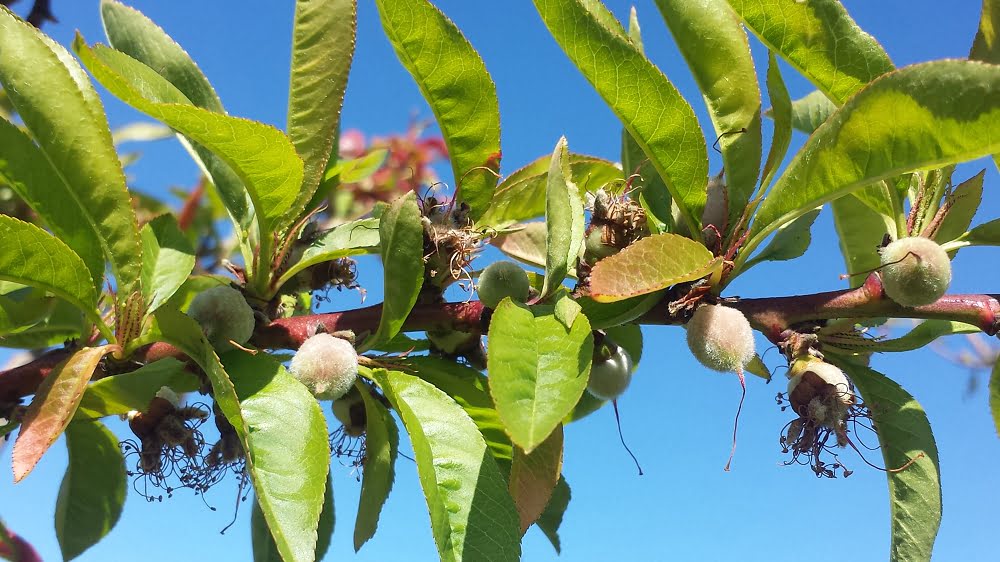

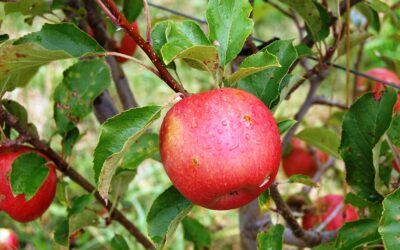
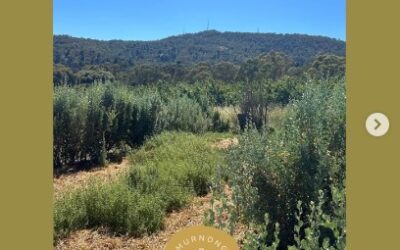
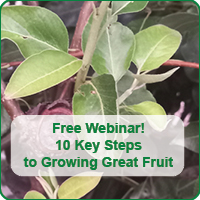

What type of spray would you suggest please?. We have new trees so didn’t spray.
They have been in for a month now.
Many thanks,
Maggie. Kyneton
Hi Maggie, we normally recommend Bordeax spray at budswell, and then again 10 days later for each variety – budswell has probably passed this year for all your peaches and nectarines, but it’s something you need to do again each spring to prevent the disease, so you may find this short course of interest, as it explains it in a bit more detail: https://growgreatfruit.com/product/keep-your-fruit-trees-free-from-disease/
I have a very, very bad dose of leaf curl on my peaches, not so bad yet on nectarine. This despite spraying as per monthly growing program, may have mistimed a few sprays due to rain soon after spraying.
The trees are only 3 and 4 years old and I really want to save them somehow.
Can you help please?
Hi Geraldine, it’s been a terrible spring for leaf curl I’m afraid, it just rained consistently while the peaches were at budswell, so lots of organic growers are finding, like you, that even though they sprayed, the rain just washed it off again. The mistiming of sprays under these conditions is then very unforgiving! Once your trees have the disease there’s nothing you can do about it this year unfortunately, however the good news is that in most cases they grow out of it as soon as the weather warms up, and then they should grow normally, meaning you only miss the early spring growth flush (which can be significant for some small trees). Give them a good dose of compost, and keep the water up to them throughout spring and summer to help them to grow out of it.
How much should I thin my peaches? Is there a rule of thumb? My 2 year old tree has set a lot of fruit (yay!) so I definitely need to do some thinning.
Hi David – congratulations about the good crop! On 2 year old trees we’d usually recommend pulling a lot of the fruit off, because the tree should be putting its energy into growing structural branches, rather than fruit, at this early stage. However if the tree already has its shape and structure established, you can let it have some fruit. Some of the variables you need to take into account are age of tree (as above), crop load (heavy, medium or light), size of the fruit, and number of days from full bloom to harvest – we have a chart in the Grow Great Fruit program to help make a simple calculation. However the rule of thumb is to take it back to single pieces of fruit, spaced about 10-20cm apart.
Hi Katie, I too have the dreaded leaf curl despite spraying. I wonder if it is worth picking off the affected leaves as I do have a lot of leaves without it? Are the leaves a vector? Or does it not matter if they drop off and fall onto the ground? Thanks Genevieve
Hi Genevieve, no it’s not really worth picking the leaves off. They shrivel up and drop off by themselves, and as long as they’ve disappeared before next spring they won’t be doing any harm.
I’ve just come in from my ‘backyard’ garden…. am devastated as the curl leaf has totally infected my once beautiful peaches and nectarines…. have almost reached for the chainsaw, instead I opted for time out and checked my email… you were the first on the list. As always great read great advice while same time last year I was overjoyed this time I’m totally grounded. I’ve had a couple of years of great fruit bearing time- Peaches, Nectarines, Apricots, Blackberries, Blueberries, Apples, Almonds, Oranges and Mandarins – had to thin and resize height esp after two falls from top of the ladder and too much fruit. This year there will be very little fruit but more maintenance/preparation. Just looking at the job gives me vertigo as I cannot find help to get the nets up and establish permanent shade cloth and netting, to keep my cat in and other cats out. Please advise if I can spray these ugly leaves out of existance. LOl. Wishful thoughts. Cheers
Glad we could help – there are definitely years where maintenance trumps harvest that’s for sure, but it’s all about keeping that long view. Sounds like a good plan to try and reduce the height of your trees to make it more manageable. If you’re on facebook, have you tried your local gardening or permaculture group? There might be someone skilled and willing lurking ready to help! As for spraying the leaves, unfortunately that won’t make a difference at this point in this season, but you’ll know for next year to keep an eye out for bud-burst & the perfect time to get on top of leaf curl. Wishing a good season despite the frustrations, Meg – Grow Great Fruit team.
Although not a disease I have a battle with black aphids that resist my soapy water spray .. any ideas?
Also 2 apricot trees now 4 years old that do not fruit?
Hi Robbie – for the black aphids, have you tried solutions like attracting predatory/beneficial insects as well as the physical control? Or, perhaps addressing any cultural causes? e.g. lots of fresh growth from high levels of nitrogen or particularly moist conditions can contribute.
As for your apricot trees, there could be myriad reasons, and I’ve included some links to help. We’d be checking the pruning regime, assessing for diseases (apricots are prone to fungal diseases & bacterial canker) and then looking at what’s happening when they’re flowering – what’s happening for pollinising, and are the blossoms having any problems before they get to fruiting. Hope that helps! Meg, Grow Great Fruit team.
I have a miniature peach tree which started off its life in my garden as a bear root tree, it has grown beautifully, flowered and now has fruit coming, but i have noticed leaf curl too grrrr how frustrating. My main question is around fruit thinning, how much should i do it given this would be its first year fruiting?